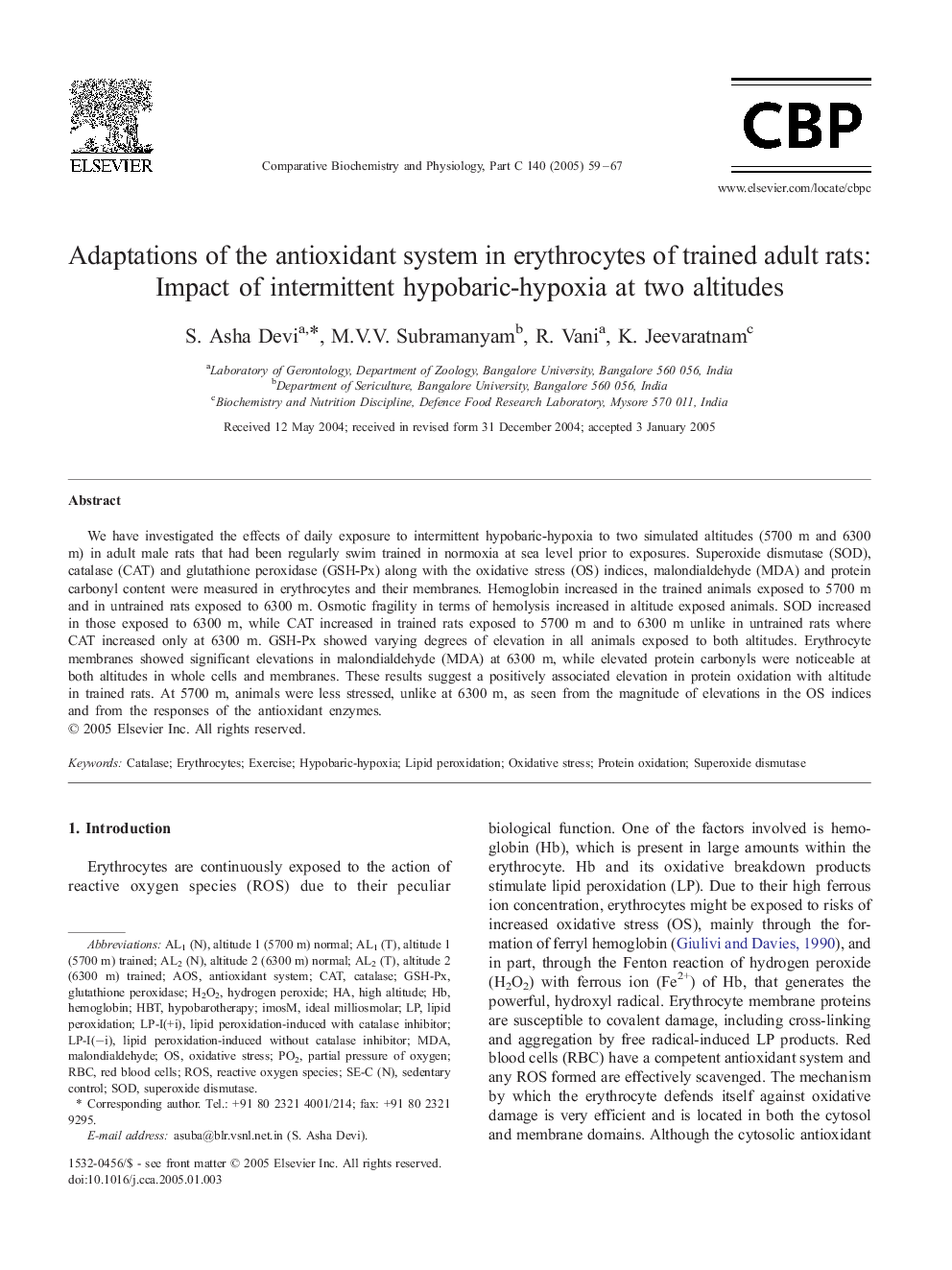| Article ID | Journal | Published Year | Pages | File Type |
|---|---|---|---|---|
| 10821825 | Comparative Biochemistry and Physiology Part C: Toxicology & Pharmacology | 2005 | 9 Pages |
Abstract
We have investigated the effects of daily exposure to intermittent hypobaric-hypoxia to two simulated altitudes (5700 m and 6300 m) in adult male rats that had been regularly swim trained in normoxia at sea level prior to exposures. Superoxide dismutase (SOD), catalase (CAT) and glutathione peroxidase (GSH-Px) along with the oxidative stress (OS) indices, malondialdehyde (MDA) and protein carbonyl content were measured in erythrocytes and their membranes. Hemoglobin increased in the trained animals exposed to 5700 m and in untrained rats exposed to 6300 m. Osmotic fragility in terms of hemolysis increased in altitude exposed animals. SOD increased in those exposed to 6300 m, while CAT increased in trained rats exposed to 5700 m and to 6300 m unlike in untrained rats where CAT increased only at 6300 m. GSH-Px showed varying degrees of elevation in all animals exposed to both altitudes. Erythrocyte membranes showed significant elevations in malondialdehyde (MDA) at 6300 m, while elevated protein carbonyls were noticeable at both altitudes in whole cells and membranes. These results suggest a positively associated elevation in protein oxidation with altitude in trained rats. At 5700 m, animals were less stressed, unlike at 6300 m, as seen from the magnitude of elevations in the OS indices and from the responses of the antioxidant enzymes.
Keywords
Related Topics
Life Sciences
Biochemistry, Genetics and Molecular Biology
Biochemistry
Authors
S. Asha Devi, M.V.V. Subramanyam, R. Vani, K. Jeevaratnam,
